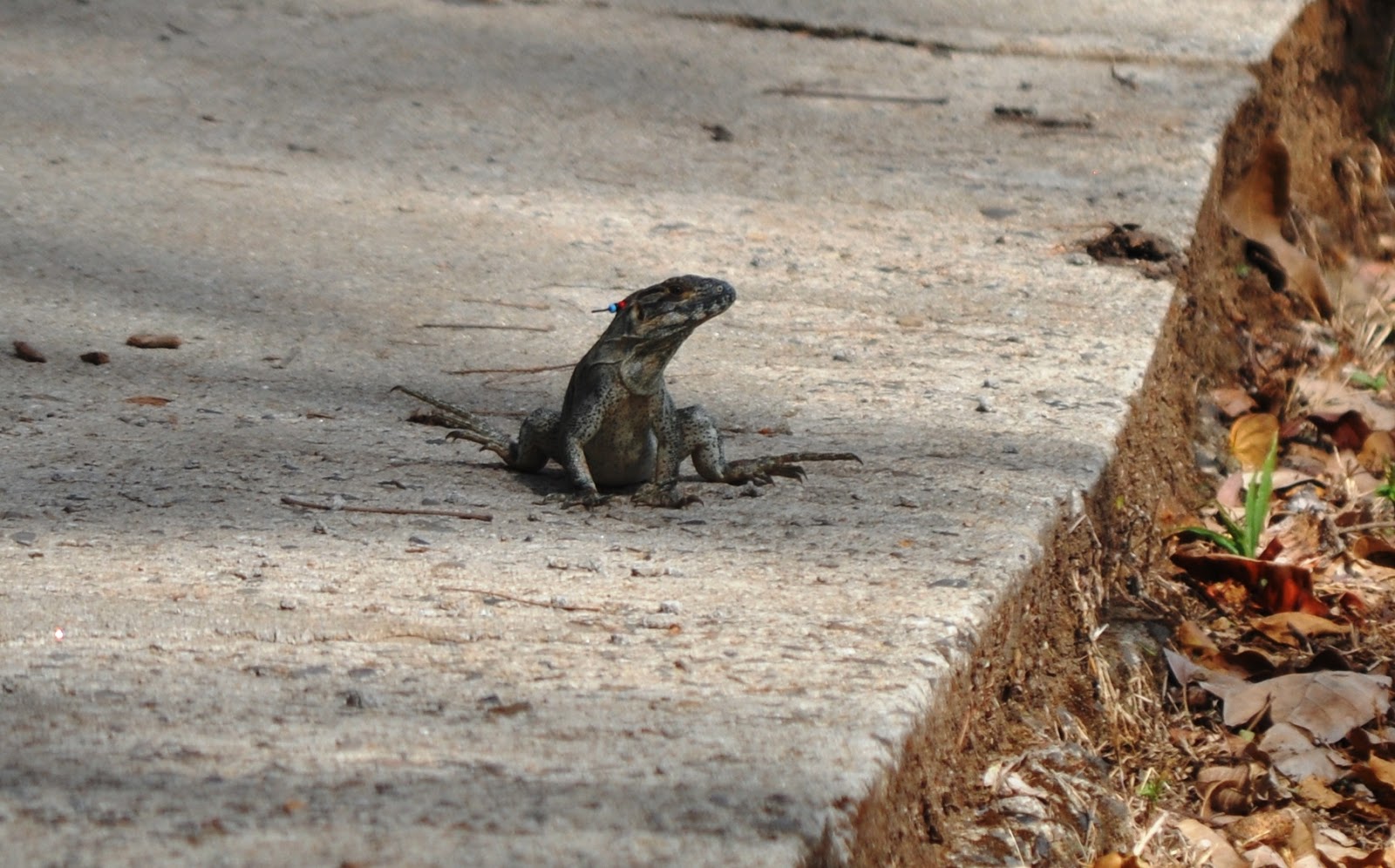 |
| Patterns of Interactions |
Each time I'm at Palo Verde, I watch the spatial pattern of animals, where they are physically located, and the places they use in their day. I observe the animals and their interaction (and try to understand why).
 |
| Kaplan |
 |
| Two iguanas on branches |
Ctenosaura similis is described as a territorial species -- but rarely does an author define the meaning of territorial behavior. Sometimes we call the males 'resource polygynists' which tries to indicate that the males guard resources females find important. I have yet to see this in operation. (I can wholly see males guarding females from other males during breeding season -- but if they are guarding female resources at other times during the year, it's subtle beyond my means!)
Maher and Lott (1995) propose this definition of territoriality: a fixed space from which an individual or group of of mutually tolerant individuals actively excludes competitors from a specific resource or resources (1). Sounds good -- but I want to understand and better define the temporal patterns of territoriality. How often is an iguana actively excluding others from that important resource? How much time is spent on the exclusion behavior? If duration and frequency is minor compared to other activities of daily life, is territoriality an important illuminator or descriptor of Ctenosaura similis behavior? At present, I'm not convinced territoriality is the indisputable epicenter from which C. similis behavior springs.
(1) Maher, C.R and D. F. Lott. 1995. Definitions of territoriality used in the study of variation in vertebrate spacing systems. Animal Behavior, 49, 1581-1597.















































